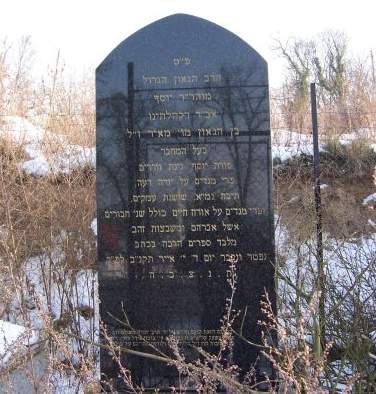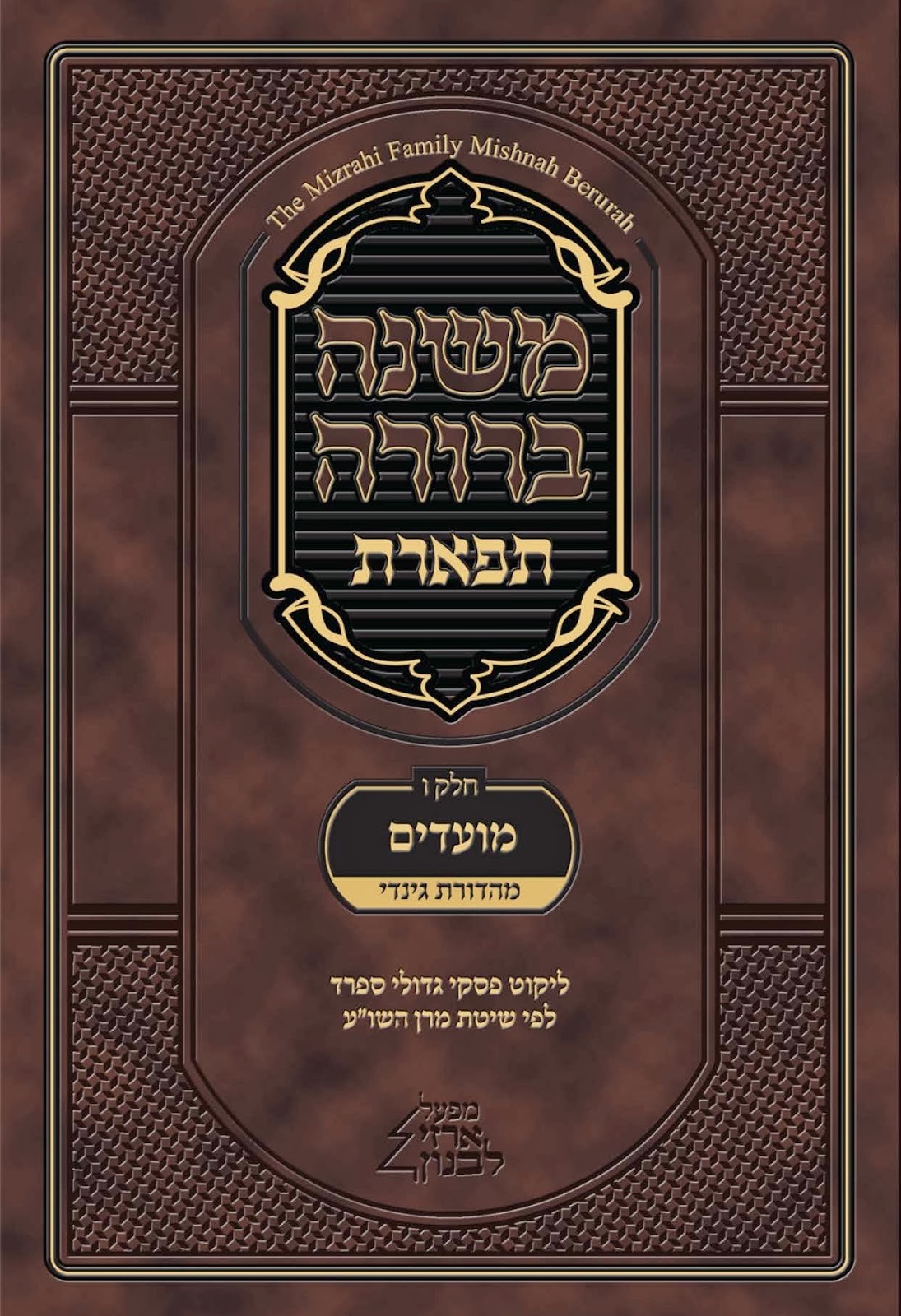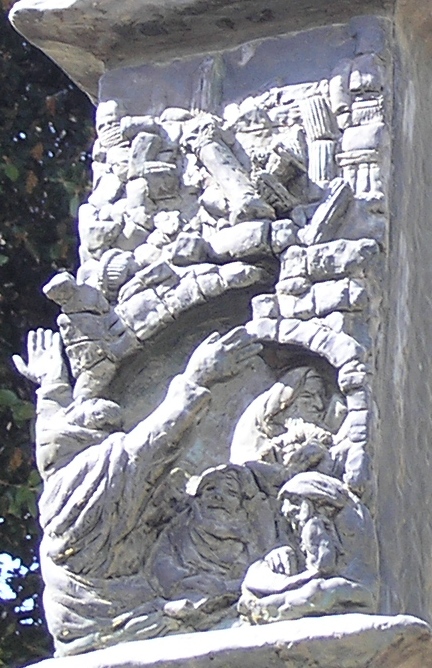|
Four Species (Sukkot)
The four species ( he, ארבעת המינים ', also called ''arba'a minim'') are four plants mentioned in the Torah (Leviticus 23:40) as being relevant to the Jewish holiday of Sukkot. Observant Jews tie together three types of branches and one type of fruit and wave them in a special ceremony each day of the Sukkot holiday, excluding Shabbat. According to Rabbinic Judaism, the waving of the four plants is a mitzvah prescribed by the Torah, and it contains symbolic allusions to a Jew's service of God. The four plants The mitzvah of waving the four species derives from the Torah. In Leviticus, it states: In Leviticus 23:40 the Hebrew terms for the four plants are: * ''‘êṣ hāḏār'' (), citrus trees * ''təmārîm'' (), palm trees * ''‘êṣ ‘āḇōṯ'' (), thick/leafy trees * ''‘arḇê-nāḥal'' (), willows of the brook/valley In Talmudic tradition, the four plants are identified as: *''etrog'' () – the fruit of a citron tree *''lulav'' () – a ripe, g ... [...More Info...] [...Related Items...] OR: [Wikipedia] [Google] [Baidu] |
Ashkenazi
Ashkenazi Jews ( ; he, יְהוּדֵי אַשְׁכְּנַז, translit=Yehudei Ashkenaz, ; yi, אַשכּנזישע ייִדן, Ashkenazishe Yidn), also known as Ashkenazic Jews or ''Ashkenazim'',, Ashkenazi Hebrew pronunciation: , singular: , Modern Hebrew: are a Jewish diaspora population who coalesced in the Holy Roman Empire around the end of the first millennium CE. Their traditional diaspora language is Yiddish (a West Germanic language with Jewish linguistic elements, including the Hebrew alphabet), which developed during the Middle Ages after they had moved from Germany and France into Northern Europe and Eastern Europe. For centuries, Ashkenazim in Europe used Hebrew only as a sacred language until the revival of Hebrew as a common language in 20th-century Israel. Throughout their numerous centuries living in Europe, Ashkenazim have made many important contributions to its philosophy, scholarship, literature, art, music, and science. The rabbinical ... [...More Info...] [...Related Items...] OR: [Wikipedia] [Google] [Baidu] |
Willow
Willows, also called sallows and osiers, from the genus ''Salix'', comprise around 400 speciesMabberley, D.J. 1997. The Plant Book, Cambridge University Press #2: Cambridge. of typically deciduous trees and shrubs, found primarily on moist soils in cold and temperate regions. Most species are known as willow, but some narrow-leaved shrub species are called osier, and some broader-leaved species are referred to as sallow (from Old English ''sealh'', related to the Latin word ''salix'', willow). Some willows (particularly arctic and alpine species) are low-growing or creeping shrubs; for example, the dwarf willow (''Salix herbacea'') rarely exceeds in height, though it spreads widely across the ground. Description Willows all have abundant watery bark sap, which is heavily charged with salicylic acid, soft, usually pliant, tough wood, slender branches, and large, fibrous, often stoloniferous roots. The roots are remarkable for their toughness, size, and tenacity to live, ... [...More Info...] [...Related Items...] OR: [Wikipedia] [Google] [Baidu] |
Synagogue
A synagogue, ', 'house of assembly', or ', "house of prayer"; Yiddish: ''shul'', Ladino: or ' (from synagogue); or ', "community". sometimes referred to as shul, and interchangeably used with the word temple, is a Jewish house of worship. Synagogues have a place for prayer (the main sanctuary and sometimes smaller chapels), where Jews attend religious Services or special ceremonies (including Weddings, Bar Mitzvahs or Bat Mitzvahs, Confirmations, choir performances, or even children's plays), have rooms for study, social hall(s), administrative and charitable offices, classrooms for religious school and Hebrew school, sometimes Jewish preschools, and often have many places to sit and congregate; display commemorative, historic, or modern artwork throughout; and sometimes have items of some Jewish historical significance or history about the Synagogue itself, on display. Synagogues are consecrated spaces used for the purpose of Jewish prayer, study, assembly, a ... [...More Info...] [...Related Items...] OR: [Wikipedia] [Google] [Baidu] |
Moses Isserles
). He is not to be confused with Meir Abulafia, known as "Ramah" ( he, רמ״ה, italic=no, links=no), nor with Menahem Azariah da Fano, known as "Rema MiPano" ( he, רמ״ע מפאנו, italic=no, links=no). Rabbi Moses Isserles ( he, משה בן ישראל איסרלישׂ, pl, Mojżesz ben Israel Isserles) (22 February 1530 / 25 Adar I 5290 – 11 May 1572 / 18 Iyar 5332), also known by the acronym Rema, was an eminent Polish Ashkenazic rabbi, talmudist, and ''posek'' (expert in Jewish law). Biography Isserles was born in Kraków, Poland. His father, Israel ben Josef (known as Isserl), was a prominent talmudist and independently wealthy, who had probably headed the community; his grandfather, Jehiel Luria, was the first rabbi of Brisk. (In an era which preceded the common use of surnames, Moses became known by his patronymic, Isserles.) He studied in Lublin under Rabbi Shalom Shachna, who would later become his father-in-law. Among his fellow pupils were his rela ... [...More Info...] [...Related Items...] OR: [Wikipedia] [Google] [Baidu] |
Shulchan Aruch
The ''Shulchan Aruch'' ( he, שֻׁלְחָן עָרוּך , literally: "Set Table"), sometimes dubbed in English as the Code of Jewish Law, is the most widely consulted of the various legal codes in Judaism. It was authored in Safed (today in Israel) by Joseph Karo in 1563 and published in Venice two years later. Together with its commentaries, it is the most widely accepted compilation of Jewish law ever written. The ''halachic'' rulings in the ''Shulchan Aruch'' generally follow Sephardic law and customs, whereas Ashkenazi Jews generally follow the halachic rulings of Moses Isserles, whose glosses to the ''Shulchan Aruch'' note where the Sephardic and Ashkenazi customs differ. These glosses are widely referred to as the ''mappah'' (literally: the "tablecloth") to the ''Shulchan Aruch's'' "Set Table". Almost all published editions of the ''Shulchan Aruch'' include this gloss, and the term "Shulchan Aruch" has come to denote ''both'' Karo's work as well as Isserles', with Kar ... [...More Info...] [...Related Items...] OR: [Wikipedia] [Google] [Baidu] |
Left-handed
In human biology, handedness is an individual's preferential use of one hand, known as the dominant hand, due to it being stronger, faster or more dextrous. The other hand, comparatively often the weaker, less dextrous or simply less subjectively preferred, is called the non-dominant hand. In a study from 1975 on 7688 children in US grades 1-6, Left handers comprised 9.6% of the sample, with 10.5% of male children and 8.7% of female children being left-handed. Handedness is often defined by one's writing hand, as it is fairly common for people to prefer to do some tasks with each hand. There are examples of true ambidexterity (equal preference of either hand), but it is rare—most people prefer using one hand for most purposes. Most of the current research suggests that left-handedness has an epigenetic marker—a combination of genetics, biology and the environment. Because the vast majority of the population is right-handed, many devices are designed for use by right-han ... [...More Info...] [...Related Items...] OR: [Wikipedia] [Google] [Baidu] |
Pri Megadim
Joseph ben Meir Teomim (1727–1792; Hebrew: יוסף בן מאיר תאומים) was a Galician rabbi born at Lemberg. While still young he succeeded his father in the position of preacher and rabbinical instructor in the yeshivah of Lemberg. Later he went to Berlin, where he stayed several years in the bet ha-midrash of Daniel Itzig. Then he resumed his former position at Lemberg, and in 1782 was appointed rabbi at Frankfurt an der Oder, where he remained until his death. He was buried in the Jewish cemetery at Frankfurt/Oder. Works Te'omim, who was one of the foremost rabbis of his time, was a thorough student of rabbinical literature, and was not unlearned in the secular sciences. He wrote: * ''Pri Megadim'' (פרי מגדים), a supercommentary on some of the major commentators on the Shulkhan Aruch: On the '' Orach chayyim'' section, he wrote the ''Mishbetzot Zahav,'' containing a supercommentary on David ben Samuel's ''Ṭurei Zahav,'' and the ''Eshel Avraham,'' on A ... [...More Info...] [...Related Items...] OR: [Wikipedia] [Google] [Baidu] |
Mishnah Berurah
The ''Mishnah Berurah'' ( he, משנה ברורה "Clear Teaching") is a work of ''halakha'' (Jewish law) by Rabbi Yisrael Meir Kagan (Poland, 1838–1933, also known as ''Chofetz Chaim''). It is a commentary on ''Orach Chayim'', the first section of the ''Shulchan Aruch'' which deals with laws of prayer, synagogue, Shabbat and holidays, summarizing the opinions of the ''Acharonim'' (post-Medieval rabbinic authorities) on that work. The title comes from b. Shabbat 139a, "They will rove, seeking the word of the LORD, but they will not find it ( Amos 8:12) -- they will not find clear teaching and clear law in one place." Contents The ''Mishnah Berurah'' is traditionally printed in 6 volumes alongside selected other commentaries. The work provides simple and contemporary explanatory remarks and citations to daily aspects of ''halakha''. It is widely used as a reference and has mostly supplanted the Chayei Adam and the Aruch HaShulchan as the primary authority on Jewish daily livi ... [...More Info...] [...Related Items...] OR: [Wikipedia] [Google] [Baidu] |
Yohanan Ben Zakkai
:''See Yohanan for more rabbis by this name''. Yohanan ben Zakkai ( he, יוֹחָנָן בֶּן זַכַּאי, ''Yōḥānān ben Zakkaʾy''; 1st century CE), sometimes abbreviated as Ribaz () for Rabbi Yohanan ben Zakkai, was one of the Tannaim, an important Jewish sage in the era of the Second Temple, and a primary contributor to the core text of Rabbinical Judaism, the Mishnah. His name is often preceded by the honorific title, "Rabban." He is widely regarded as one of the most important Jewish figures of his time and his escape from the Roman destruction of Jerusalem, that allowed him to continue teaching, may have been instrumental in rabbinic Judaism surviving the destruction. His tomb is located in Tiberias, within the Maimonides burial compound. Yohanan was the first Jewish sage attributed the title of rabbi in the Mishnah. Life The Talmud reports that, in the mid-first century, he was particularly active in opposing the Sadducees' interpretations of Jewish law ... [...More Info...] [...Related Items...] OR: [Wikipedia] [Google] [Baidu] |
Temple In Jerusalem
The Temple in Jerusalem, or alternatively the Holy Temple (; , ), refers to the two now-destroyed religious structures that served as the central places of worship for Israelites and Jews on the modern-day Temple Mount in the Old City of Jerusalem. According to the Hebrew Bible, the First Temple was built in the 10th century BCE, during the reign of Solomon over the United Kingdom of Israel. It stood until , when it was destroyed during the Babylonian siege of Jerusalem. Almost a century later, the First Temple was replaced by the Second Temple, which was built after the Neo-Babylonian Empire was conquered by the Achaemenid Persian Empire. While the Second Temple stood for a longer period of time than the First Temple, it was likewise destroyed during the Roman siege of Jerusalem in 70 CE. Projects to build the hypothetical " Third Temple" have not come to fruition in the modern era, though the Temple in Jerusalem still features prominently in Judaism. Today, the Temple M ... [...More Info...] [...Related Items...] OR: [Wikipedia] [Google] [Baidu] |
Myrtus
''Myrtus'' (commonly called myrtle) is a genus of flowering plants in the family Myrtaceae. It was first described by Swedish botanist Linnaeus in 1753. Over 600 names have been proposed in the genus, but nearly all have either been moved to other genera or been regarded as synonyms. The genus ''Myrtus'' has three species recognised today: *'' Myrtus communis'' – Common myrtle; native to the Mediterranean region in southern Europe *''Myrtus nivellei'' – Saharan myrtle; native to North Africa *'' Myrtus phyllireaefolia'' Description Common myrtle '' Myrtus communis'', the "common myrtle", is native across the Mediterranean region, Macaronesia, western Asia, and the Indian subcontinent. It is also cultivated. The plant is an evergreen shrub or small tree, growing to tall. The leaf is entire, 3–5 cm long, with a fragrant essential oil. The star-like flower has five petals and sepals, and numerous stamens. Petals usually are white. The flower is pollinated ... [...More Info...] [...Related Items...] OR: [Wikipedia] [Google] [Baidu] |


.jpg)





